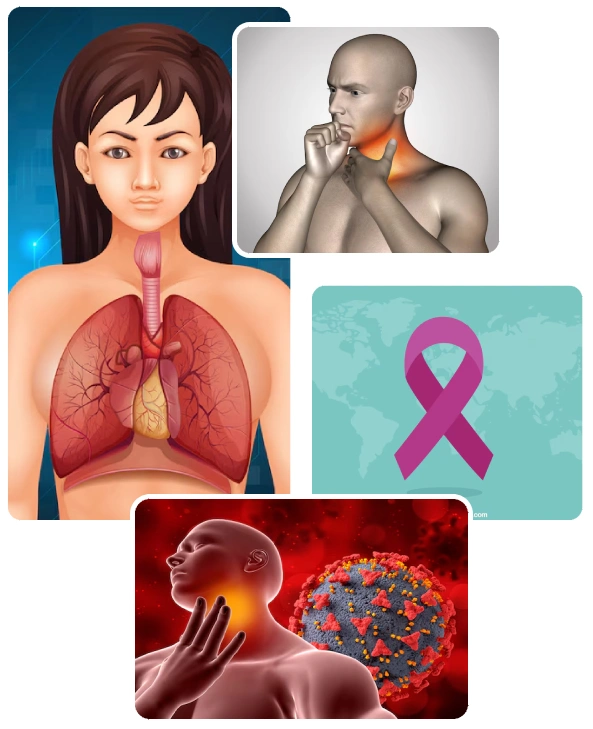Oropharynx Cancer

Oropharynx Cancer Doctor in Kolkata

Symptoms of Oropharynx Cancer
- A persistent sore throat (pharyngitis) that doesn’t improve.
- Pain or difficulty swallowing (dysphagia).
- Difficulty fully opening your mouth (trismus) or moving your tongue.
- Unexplained weight loss.
- Persistent changes in your voice.
- Ongoing ear pain.
- A lump in the back of your throat, mouth, or neck.
- Coughing up blood.
- A white patch on your tongue or the lining of your mouth that does not heal.
Connect with the oropharynx oncologist in Kolkata in case you experience any of these symptoms for early intervention.
Causes of Oropharynx Cancer
Oropharynx cancer is most commonly caused by a human papillomavirus (HPV) infection. HPV produces proteins that disrupt the normal function of genes responsible for controlling the growth of cells in the mouth and throat lining. When these genes lose their ability to regulate cell growth, the cells multiply uncontrollably, leading to tumour formation.
Tobacco use
Smoking or using chewing tobacco damages the throat lining. In response to this damage, throat cells divide more frequently, increasing the risk of DNA copying errors. These errors can lead to the development of cancerous cells.
Alcohol consumption


Stages of Oropharynx Cancer
Stage 0 (Carcinoma in Situ)
Stage I
The tumour is 2 cm or smaller in size.
Stage II
The tumour measures more than 2 cm but less than 4 cm.
Stage III
The tumour is larger than 4 cm or has spread to the epiglottis (the flap of cartilage that covers the larynx when swallowing).
OR
The cancer has spread to one lymph node on the same side of the neck as the tumour, and the lymph node is no larger than 3 cm.
Stage IV
Stage 4 oropharynx cancer is further divided into stages 4A, 4B, and 4C based on several factors:
- The extent of the tumour’s growth into nearby areas, such as the larynx, tongue muscles, lower jawbone, or skull.
- The size and number of lymph nodes affected.
- Difficulty fully opening your mouth (trismus) or moving your tongue.
- Whether the cancer has spread beyond the lymph nodes (extranodal extension).
- The location of affected lymph nodes, whether on the same side, opposite side, or both sides of the neck.
- Whether the cancer has spread to distant parts of the body, like the lungs or liver (distant metastasis).

Diagnosis of Oropharynx Cancer
Biopsy
Pathologists may also test cancerous tissue for the presence of HPV. Tumours that test positive for HPV may respond better to radiation therapy compared to those that do not involve HPV.
Following a biopsy or tonsillectomy, you may experience throat soreness or mild bleeding for a few days.
Fine Needle Aspiration
Ultrasound may be used to guide the needle during the procedure by identifying structures in the neck.
CT Scans
PET/CT Scans
The CT component provides detailed images of the body’s organs, and the combined PET/CT results give doctors a clearer view of the cancer’s extent.
Treatment of Oropharynx Cancer
The oropharynx oncologist in Kolkata will analyse your condition and provide the best treatment for your condition.
Radiation Therapy
-
External Beam Radiation:
It delivers radiation from outside the body, targeting the tumour site.
-
Brachytherapy:
It involves placing radioactive material directly into or near the tumour.
Radiation therapy is often combined with chemotherapy or targeted therapy for more advanced cases.
Chemotherapy
-
In combination with radiation therapy (chemoradiation):
It is often used for more advanced cancer stages.
-
As adjuvant therapy:
Chemotherapy may be given to reduce the risk of the cancer returning.
-
For metastatic cancer:
Chemotherapy may be used if the cancer has spread to other parts of the body.
Targeted Therapy
Immunotherapy




